
Hearts of Iron is a grand strategy video game developed by Paradox Development Studio and published by Strategy First. Based on the Europa Engine, it was originally released in 2002 for Microsoft Windows. A Mac OS X version was released by Virtual Programming the following year. In 2004, Atari, SA published Hearts of Iron: Platinum, an updated version that sought to improve several aspects of the game.
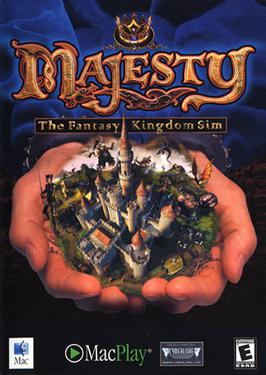
Majesty: The Fantasy Kingdom Sim is a real-time strategy video game developed by Cyberlore Studios, and published by Hasbro Interactive under the MicroProse brand name for Windows in March 2000. The game is not a simulator; that part of the title is a witticism, a reference to the game's adherence to fantasy and fantasy role-playing game cliches. In Majesty, players assume the role of king in a fantasy realm called Ardania which features city sewers infested with giant rats, landscapes dotted with ancient evil castles, and soldiers helpless against anything bigger than a goblin. As Sovereign, the player must rely on hiring bands of wandering heroes in order to get anything done. In a major divergence from most real-time strategy games, the player does not have direct control over their units.
Real-time tactics (RTT) is a subgenre of tactical wargames played in real-time, simulating the considerations and circumstances of operational warfare and military tactics. It is differentiated from real-time strategy gameplay by the lack of classic resource micromanagement and base or unit building, as well as the greater importance of individual units and a focus on complex battlefield tactics.

Warhammer: Mark of Chaos is a real-time tactics game set in the Warhammer universe. It was developed by Black Hole Entertainment and co-published by Namco Bandai Games in the US and Deep Silver in PAL territories. The game was released for Microsoft Windows in the US on November 14, 2006, with subsequent release in PAL territories on November 23, 2006.
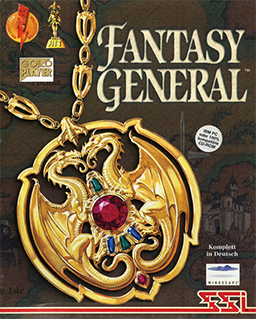
Fantasy General is a fantasy computer wargame published by Strategic Simulations in 1996. Its structure was taken from the game Panzer General with some modifications to the base system. It was the third in the Five Star General series. It allows gaming against other human players by email. It was published on GOG.com in May 2015 with support for Windows, macOS, and Linux after GOG Ltd acquired the copyright to the title.
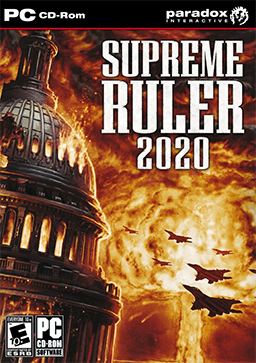
Supreme Ruler 2020 is a grand strategy wargame developed by BattleGoat Studios and published by Paradox Interactive. The game was released in 2008 and is a sequel to Supreme Ruler 2010. In the game, the player controls all aspects of a region's government attempts to unite a world of fragmented states. On December 22, 2008 BattleGoat Studios released an expansion pack for the game titled Global Crisis. A Gold Edition of the game containing both the core game and the expansion pack was released on September 18, 2009.

Robert E. Lee: Civil War General is a 1996 computer wargame developed by Impressions Games and published by Sierra On-Line. Set during the American Civil War, it tasks the player with leading the Confederate Army of Northern Virginia to victory against the Union Army of the Potomac. Impressions sought to make Civil War General accessible to wargame newcomers by streamlining its gameplay, and the Panzer General series was a reference point for its design and title.
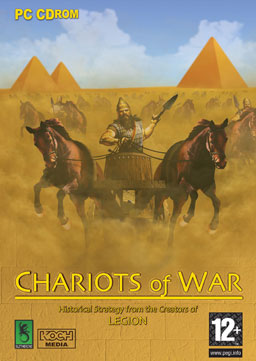
Chariots of War is an isometric 2D computer wargame, developed by Slitherine Software and Paradox Interactive, and published by Strategy First. It is set in the ancient Near East.
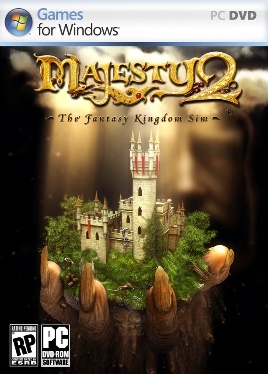
Majesty 2: The Fantasy Kingdom Sim is a real-time strategy game developed by 1C:Ino-Co and published by Paradox Interactive. The game was released on September 18, 2009. It is a sequel to Cyberlore's Majesty: The Fantasy Kingdom Sim.

Mount & Blade: Warband is the standalone expansion pack to the strategy action role-playing video game Mount & Blade. Announced in January 2009, the game was developed by the Turkish company TaleWorlds Entertainment and was published by Paradox Interactive on March 30, 2010. The game is available as a direct download from the TaleWorlds website, through the Steam digital distribution software, as a DRM-free version from GOG.com, or as a DVD with required online activation. The macOS and Linux versions were released on July 10, 2014, through Steam.
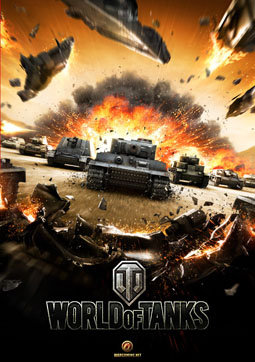
World of Tanks (WoT) is an armoured warfare-themed multiplayer online game developed by Wargaming, featuring 20th century (1910s–1970s) era combat vehicles. It is built upon a freemium business model where the game is free-to-play, but participants also have the option of paying a fee for use of "premium" features. The focus is on player vs. player gameplay with each player controlling an armored vehicle, from the time of Pre-World War 2 to the Cold War-era.

Dota 2 is a 2013 multiplayer online battle arena (MOBA) video game by Valve. The game is a sequel to Defense of the Ancients (DotA), a community-created mod for Blizzard Entertainment's Warcraft III: Reign of Chaos. Dota 2 is played in matches between two teams of five players, with each team occupying and defending their own separate base on the map. Each of the ten players independently controls a powerful character known as a "hero" that all have unique abilities and differing styles of play. During a match players collect experience points and items for their heroes to defeat the opposing team's heroes in player versus player combat. A team wins by being the first to destroy the other team's "Ancient", a large structure located within their base.
Multiplayer online battle arena (MOBA) is a subgenre of strategy video games in which two teams of players compete against each other on a predefined battlefield. Each player controls a single character with a set of distinctive abilities that improve over the course of a game and which contribute to the team's overall strategy. The typical ultimate objective is for each team to destroy their opponents' main structure, located at the opposite corner of the battlefield. In some MOBA games, the objective can be defeating every player on the enemy team. Players are assisted by computer-controlled units that periodically spawn in groups and march forward along set paths toward their enemy's base, which is heavily guarded by defensive structures. This type of multiplayer online video games originated as a subgenre of real-time strategy, though MOBA players usually do not construct buildings or units. Moreover, there are examples of MOBA games that are not considered real-time strategy games, such as Smite (2014), and Paragon. The genre is seen as a fusion of real-time strategy, role-playing and action games.

King Arthur II: The Role-Playing Wargame is a real-time tactics and role-playing video game and a sequel to King Arthur: The Role-Playing Wargame, released online in Europe on September 20, 2011, and then worldwide in 2012. It was developed by NeocoreGames and published by Paradox Interactive. It blends elements of the real-time tactics, role-playing, and grand strategy genres into one.
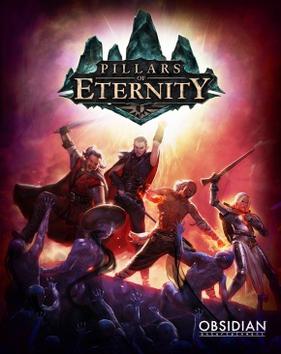
Pillars of Eternity is a role-playing video game developed by Obsidian Entertainment and published by Paradox Interactive. It was released for Microsoft Windows, OS X, and Linux on March 26, 2015. The game is a spiritual successor to the Baldur's Gate and Icewind Dale series, along with Planescape: Torment. Obsidian started a crowdfunding campaign on Kickstarter for it in September 2012. The campaign raised over US$4 million, which was the highest funded video game at the time. The game uses the Unity engine.

Wargame: AirLand Battle is a real-time strategy video game developed by Eugen Systems and published by Focus Home Interactive, released on May 29, 2013. It is set in Europe during the Cold War, most specifically in the years 1975–85. It is the sequel to the 2012 Wargame: European Escalation.

Hearts of Iron IV is a grand strategy computer wargame developed by Paradox Development Studio and published by Paradox Interactive. It was released worldwide on 6 June 2016. It is the sequel to 2009's Hearts of Iron III and the fourth main installment in the Hearts of Iron series. Like previous games in the series, Hearts of Iron IV is a grand strategy wargame that focuses on World War II. The player can control any country in the world, starting either in 1936 or 1939. Players can choose to pursue the historically accurate sequence of events or not.
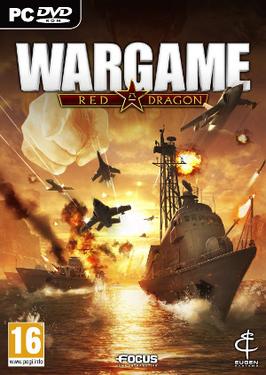
Wargame: Red Dragon is a real-time strategy video game developed by Eugen Systems and originally published by Focus Home Interactive, released on April 17, 2014. It is the sequel to the 2013 Wargame: AirLand Battle.
Hegemony is a series of computer strategy games developed by Canadian studio Longbow Games. The games combine historical grand strategy with real-time battles on a seamless map. The title references the concept of hegemony, i.e. the political, economic, or military predominance or control of one state over others.

















